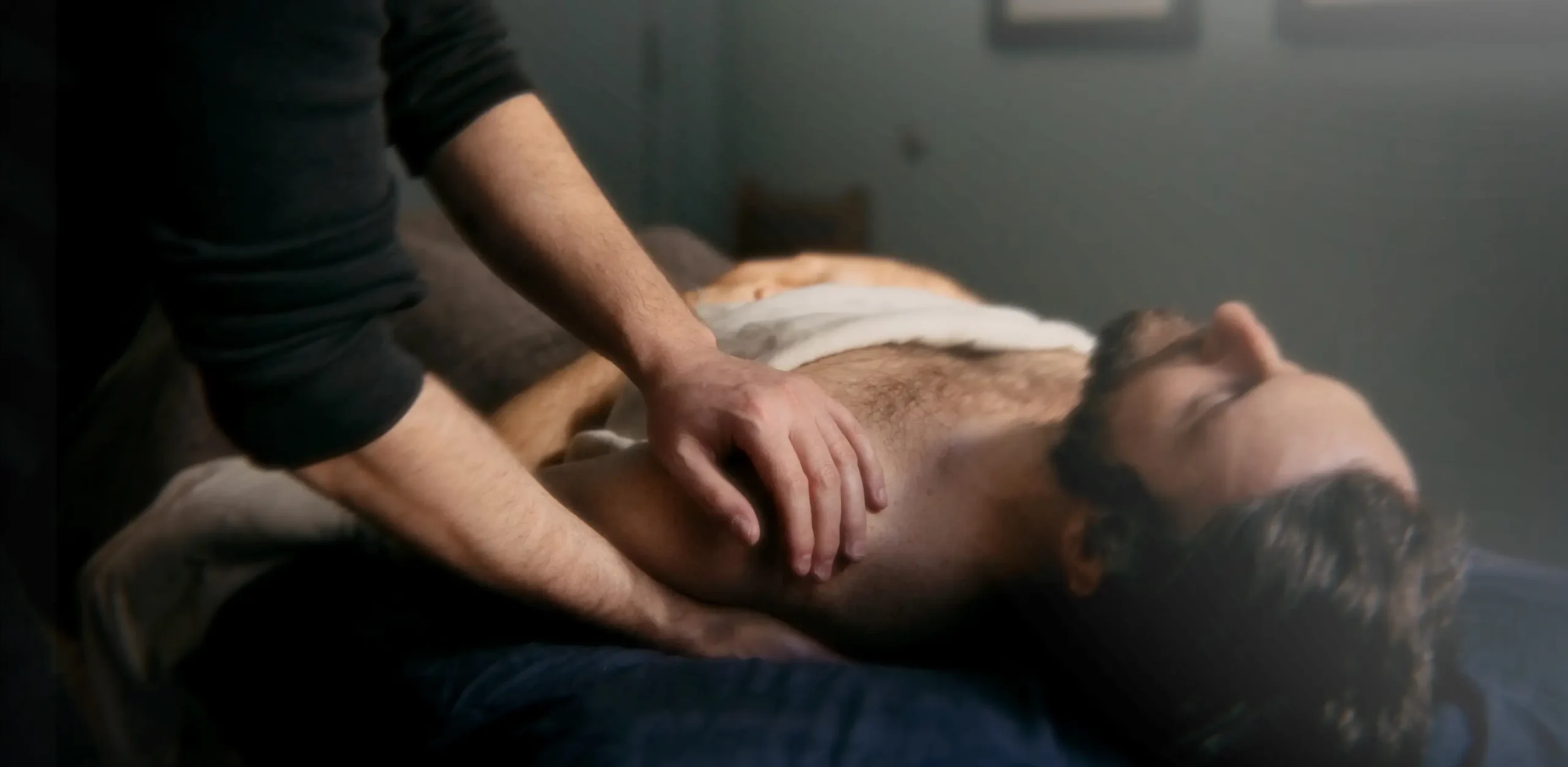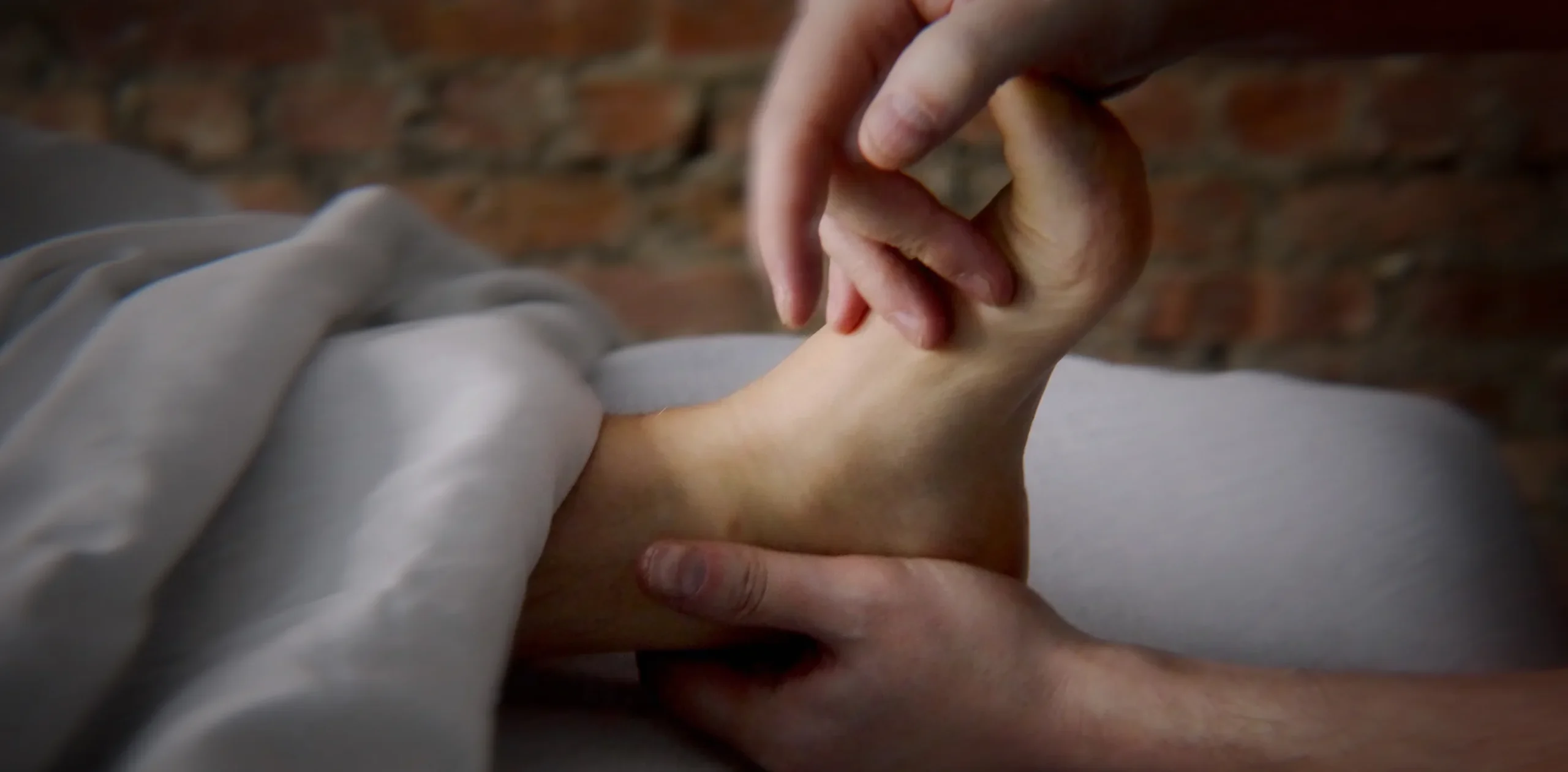The newest medical information is now easy to find online and shows that the surgical boom of the 90’s didn’t actually produce better results for patients with shoulder pain. As a result, more patients are turning to alternative, more conservative treatments (ie non-surgical) for dealing with this. These alternative treatments often include massage therapy and physical therapy.
Surgery frequently relies on images (i.e. MRI, X-Ray) to determine a course of action. However, studies have shown that surgically fixing the anomalies found in these images doesn’t always solve the pain. In fact, for many common pains including low back, neck, and shoulder pain, surgery had similar results to simply doing physical therapy.
Pain medication is used to treat your symptoms, but usually won’t address the root cause. Massage and physical therapy look at the whole picture of your history, body alignment, posture, and movements. Both approach the problem from an integrative and comprehensive perspective. They seek to identify the underlying cause of your shoulder pain and give you the tools to move better without pain.
More About Shoulder Pain and Common Pathologies
Shoulder pain is a common complaint. In primary care scenarios, the reported annual incidence of shoulder pain is 14.7 per every 1000 patients per year. For those with previous shoulder pain, the recurrence rate is about 25%. Additionally, nearly 40-50% of those experiencing previous shoulder pain will still report some pain after 12 months.
The most common shoulder pain pathology is rotator cuff disorders, accounting for upwards of two thirds of cases. The “rotator cuff” is a group of four muscles. They stabilize and hold your arm bone (humerus) in the socket on your shoulder blade (scapula). The fancy name for your shoulder socket is the glenohumeral joint and the glenoid cavity of the scapula.
The four muscles are colloquially known as the “SITS” muscles: supraspinatus, infraspinatus, teres minor, and subscapularis. The muscle bellies of these muscles are located on your shoulder blade. The tendons of these muscles (white areas shown in image below) pull your humerus into the glenoid cavity to provide stability and rotation of the arm.
Types of Rotator Cuff Injuries
Rotator cuff disorders can include: (1) inflammation of the rotator cuff muscle tendons, (2) inflammation of a bursa in this area of the shoulder, (3) impingement of a rotator cuff muscle tendon and (4) partial or complete tears of the rotator cuff muscle tendons.

Adhesive capsulitis (“frozen shoulder”) accounts for approximately 2% of cases. In this condition, the connective tissue around the glenohumeral joint becomes stiffer, inflamed and potentially thicker. The exact cause is not known. The result of this stiffness and inflammation is restricted motion and chronic pain or discomfort.
Other common shoulder pathologies include tendonitis, labrum tears and acromioclavicular joint disorders. All of them basically suck in varying ways 🙁
Why Surgery and Pain Medication Are Not Always the Best Options
In the last decade, medical imaging has taken more of a back seat to more comprehensive assessment. Images don’t necessarily tell the full story. They also don’t always correspond to the symptoms a patient is presenting with. Nor can they necessarily capture the full picture of a patient’s history.
Surgery primarily relies on this single view of a person’s anatomy to determine an invasive form of action. After a traumatic event, surgery may certainly be indicated as the most viable option. However, research has recently been pointing towards conservative treatment for less traumatic events. For instance, a full rotator cuff tear that completely severs the muscle will require surgery. However a partial tear usually responds better to non surgical approaches.
Pain Medication Can Be a Useful Crutch But Has Very Negative Long Term Effects
Medication for pain, on the other hand, treats symptoms. Its prescribed for a broad range of symptoms that may not necessarily be specific to your condition or injury. Medication will mask the feelings of pain, but likely won’t resolve them. Pain medication can be temporarily useful if you are having trouble sleeping or performing day to day activities–things you need to be able to do.
However, it should not be a substitute for receiving comprehensive treatment from physical therapy, massage therapy or preferably both together. Your pain is telling you something important about your body.
The treatment goals of a physical therapist and massage therapist are to determine a comprehensive approach. We use your symptoms, medical history, daily activities and habitual movement patterns to figure out how best to treat your pain. And we don’t just address your symptoms. We address your whole body to keep them from coming back!
How Massage Therapy and Physical Therapy Go Hand-in-Hand for Shoulder Pain
Physical therapy and massage therapy can complement each other very well. With many shoulder pathologies, shoulder movement needs to be relearned, refined and/or regained. Shoulder musculature also will need to be strengthened in order to protect the structure. Physical therapists are great at assessing your movement restrictions. They will be able to put together a plan for you to gain back your shoulder function from a strength, activation, and motor control perspective.
A physical therapist’s skill set and education may include some manual therapy but they mainly deal with rehabilitative exercise. Their education on manual therapy is also not nearly as comprehensive as that of a massage therapist. They often prefer to leave any needed in-depth manual therapy to the hands of experienced medical massage therapists.
Massage Therapy is best for getting tissue open – PT is best for stabilizing and strengthening
Manual therapy or massage can often be indicated and useful for shoulder pain. Especially in tandem with a physical therapist. Massage therapy is a great way to tell your nervous system to tell it to stop sending pain signals to an area. Massage therapy can also break up and elongate scar tissue and adhesions. And utilize methods such a PNF (proprioceptive neuromuscular facilitation) to slowly gain back range of motion.
When working based on your physical therapist’s assessment, a massage therapist can be more specific and targeted in their approach and treatment plan. And vice versa. Together as a team they can determine and answer questions. Such as which muscles aren’t firing? Where do you need more range of motion? Which muscles might need to be encouraged to release or “let go”? As the physical therapy slowly be surely builds strength and stability, your massage therapy sessions can catapult you more quickly to increased range of motion and ease.
Sample Scenario: Partial Rotator Cuff Tear
Imagine that you are a painter who has been painting interior spaces for over 10 years. Painting requires significant use of your arm in an overhead position. And involves lots of repetitive motion. You started to feel fatigue and soreness in your right shoulder area a couple of months ago. But this has happened before and usually you bounce back in a few weeks.
Except this time it doesn’t bounce back and gets slowly worse. Now you are having difficulty keeping your arm up and working for extended periods of time.
After consulting with an orthopedic doctor, your decide to get an MRI so they can see what is going on. The MRI shows a partial tear in your supraspinatus tendon (part of your rotator cuff). You decide to explore conservative treatment options that include physical therapy and massage therapy.
How Massage Therapy and Physical Therapy Get You Back in Action
Your physical therapist works with you to strengthen your rotator cuff muscles, through gentle exercises. Including the one that shows a tear, but also the surrounding ones as well. You work to slowly increase your resistance and load bearing. The goal is to be able to use your shoulder while still remaining pain-free. You also work on your range of motion so that you can comfortably have your arm above your head again.
In coordination with your physical therapist, your massage therapist works with you to decrease any inflammation and tenderness in your rotator cuff muscles. Your massage therapist also uses stretching and neuromuscular techniques to help complement the strength and mobility work the physical therapist is doing. In addition, they will also identify and help release other areas of your body that may be contributing to your shoulder tightness such as your oblique abdominals.
Within several weeks, you are seeing significant improvement in your discomfort. After a few months of dedicated work, you feel completely back to normal. You continue to follow exercise and stretching protocols for 10-15 minutes each day and receive maintenance massages about once every 4-6 weeks. This simple and basic routine helps to make sure your shoulders can continue to keep up with the demands of your job for years to come.
All without surgery and without long term need for pain medication!
Come Get Your Shoulder Pain Massage and Assessment
Bodyworks DW massage therapists are trained to help with multiple shoulder pain pathologies. They are also trained to work with and understand physical therapists and their jargon. Our therapists are ready to help you find out if massage therapy could be a part of your shoulder pain rehabilitation plan. Already had surgery? Massage therapy can still provide major benefits in your recovery towards normal and healthy shoulder function! Once you’re working with a physical therapist after your surgery, it’s safe to add massage therapy as well 🙂
Would you like to schedule a shoulder pain massage in New York City? You can schedule sessions for shoulder pain massage in Midtown or in the Financial District. Contact Bodyworks DW today or click on the button to book online at either of our studios!



